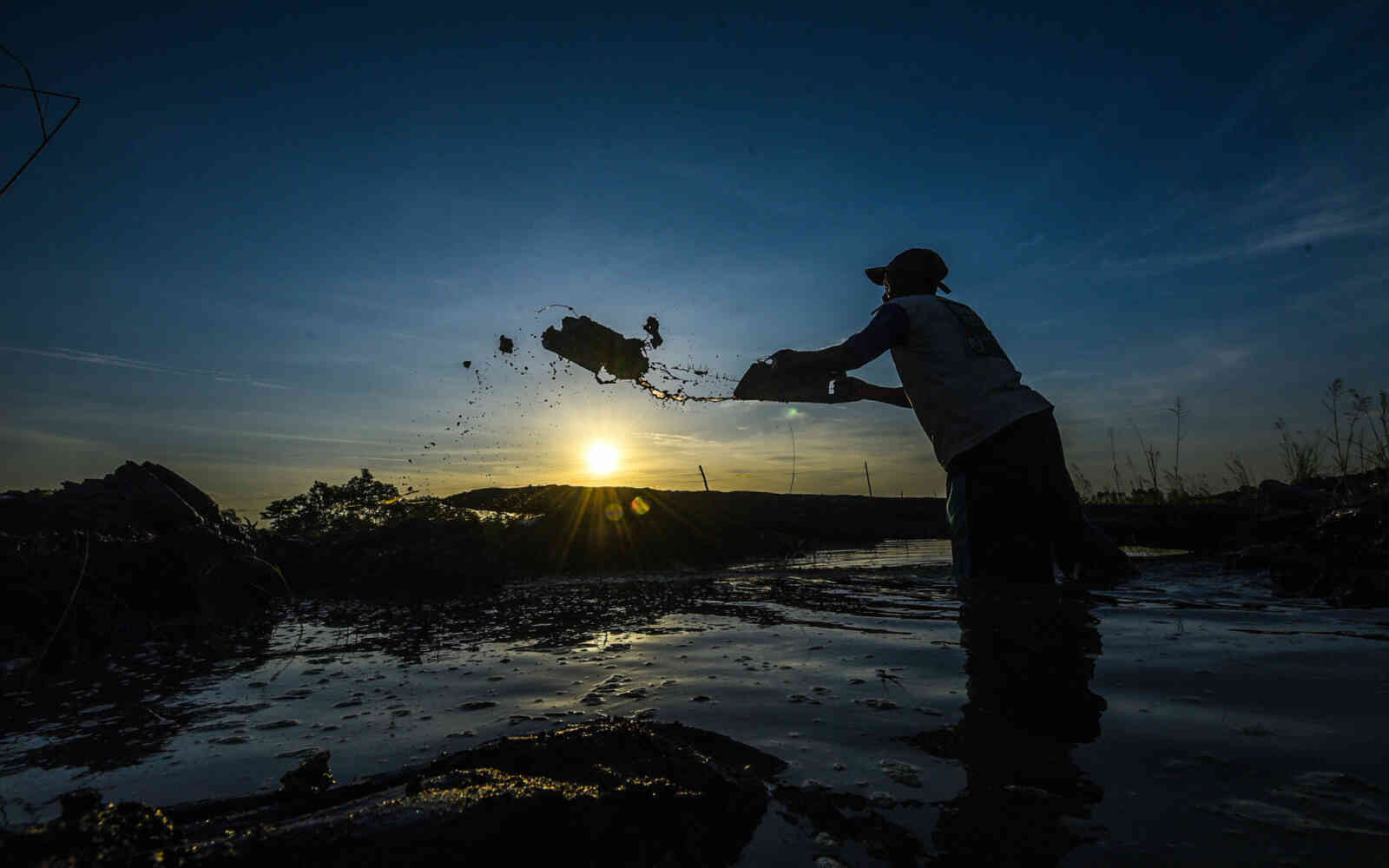The United Nations Office for Project Services (UNOPS)

A tsunami survivor’s journey: shaping the future of disaster preparedness
Two decades after the 2004 tsunami, a rebuilt school in Aceh stands as a symbol of hope and resilience, inspiring a generation to rise above tragedy. Discover how a survivor’s journey from student to disaster management expert is shaping safer communities.
On 26 December 2004, a massive earthquake off the coast of Indonesia's island of Sumatra triggered one of the deadliest tsunamis in history. The disaster devastated communities across Southeast Asia, claiming over 170,000 lives in Indonesia alone, with Aceh province bearing the brunt of the destruction. Entire villages were washed away and vital infrastructure – including over 1,100 schools in Aceh – was obliterated, leaving tens of thousands of children without access to education.
In the wake of the tragedy, rebuilding efforts brought the international community together, focusing on restoring hope through resilient infrastructure. Partnering with UNICEF, UNOPS constructed 225 earthquake-resistant schools across Aceh and Nias Island. Designed to provide safe, modern learning environments, these schools were more than just buildings – they became symbols of recovery and resilience.
For Rifqi Irvansyah, these efforts had a transformative impact. As a young boy, Rifqi was in the third grade when the tsunami struck, forever altering the trajectory of his life.
The tsunami
Nine-year-old Rifqi Irvansyah was watching TV with his family in their home in Aceh, Indonesia. It seemed like any other Sunday morning. Then the ground shook.
“At first, we thought it was just a typical earthquake,” Rifqi recalls. “But the shaking grew increasingly intense.”
As cracks began to appear in the walls of nearby houses, Rifqi and his neighbours ran for safety. When the tremors subsided, they thought the worst was over, until someone shouted, “Ie laot ka di ek!” (“The seawater is rising!”).
Panic swept through the community as they fled to higher ground. “Fortunately, we lived close to a hill,” Rifqi says. “My family and I evacuated there, along with many others.”
The tsunami stopped just less than three kilometres from their home, sparing their house but leaving behind a trail of destruction. In the months that followed, Rifqi’s school was closed and classes moved to a makeshift facility in an evacuation camp.
“The facilities were minimal, but it allowed us to keep learning while waiting for the school to be reconstructed,” he remembers.
When Rifqi’s school was finally rebuilt, it marked a turning point not just for him but for his entire community.
“The new school felt like a fresh start,” Rifqi shares. “The classrooms were freshly painted, the ceilings were repaired and the library became much larger and better equipped.”

A lasting legacy
The schools rebuilt by UNOPS didn’t just restore education – they set a new standard for disaster-resilient infrastructure. Designed to withstand earthquakes and other hazards, they prioritized student safety while incorporating features tailored to community needs. These efforts contributed to a surge in primary school enrollment, reduced dropout rates and increased completion rates across the region.
For Rifqi, this experience sparked a lifelong interest in disaster preparedness.
“The 2004 tsunami and the subsequent reconstruction efforts played a profound role in shaping my decision to pursue a career in earthquake engineering and disaster management. As a survivor, seeing the massive destruction and challenges my community faced during recovery left a strong impression on me,” he says.

The experience made me understand how important it is to have strong infrastructure and be prepared for disasters to reduce their impact.
When my school was rebuilt, I saw how improved designs and construction not only made the building safer but also gave people hope for a better future. This sparked my interest in how engineering can save lives and help build stronger communities.
Now a researcher at the Tsunami and Disaster Mitigation Research Center in Aceh, Rifqi focuses on assessing the vulnerability of buildings, particularly schools, to natural disasters.
“School buildings are a key focus for several reasons. They are highly vulnerable to disasters because they house children, who may not fully understand mitigation measures,” he explains. “Ensuring these buildings meet high safety standards is essential for saving lives and supporting disaster response efforts.”
Through his research, Rifqi works to ensure that future generations will not face the same vulnerabilities. “My ultimate goal is to help build safer communities and empower societies to recover more effectively from natural disasters,” he says.
Pillars of resilience
Two decades after the tsunami, the schools built in Aceh and Nias continue to serve as critical hubs for learning and community resilience. They have become safe spaces for children, even during emergencies, and have inspired broader adoption of disaster-resistant construction practices.
As the region marks 20 years since the disaster, stories like Rifqi’s highlight the enduring impact of investments in resilient infrastructure. They show that recovery is not just about rebuilding what was lost but about creating stronger, safer communities that can face the future with confidence.












